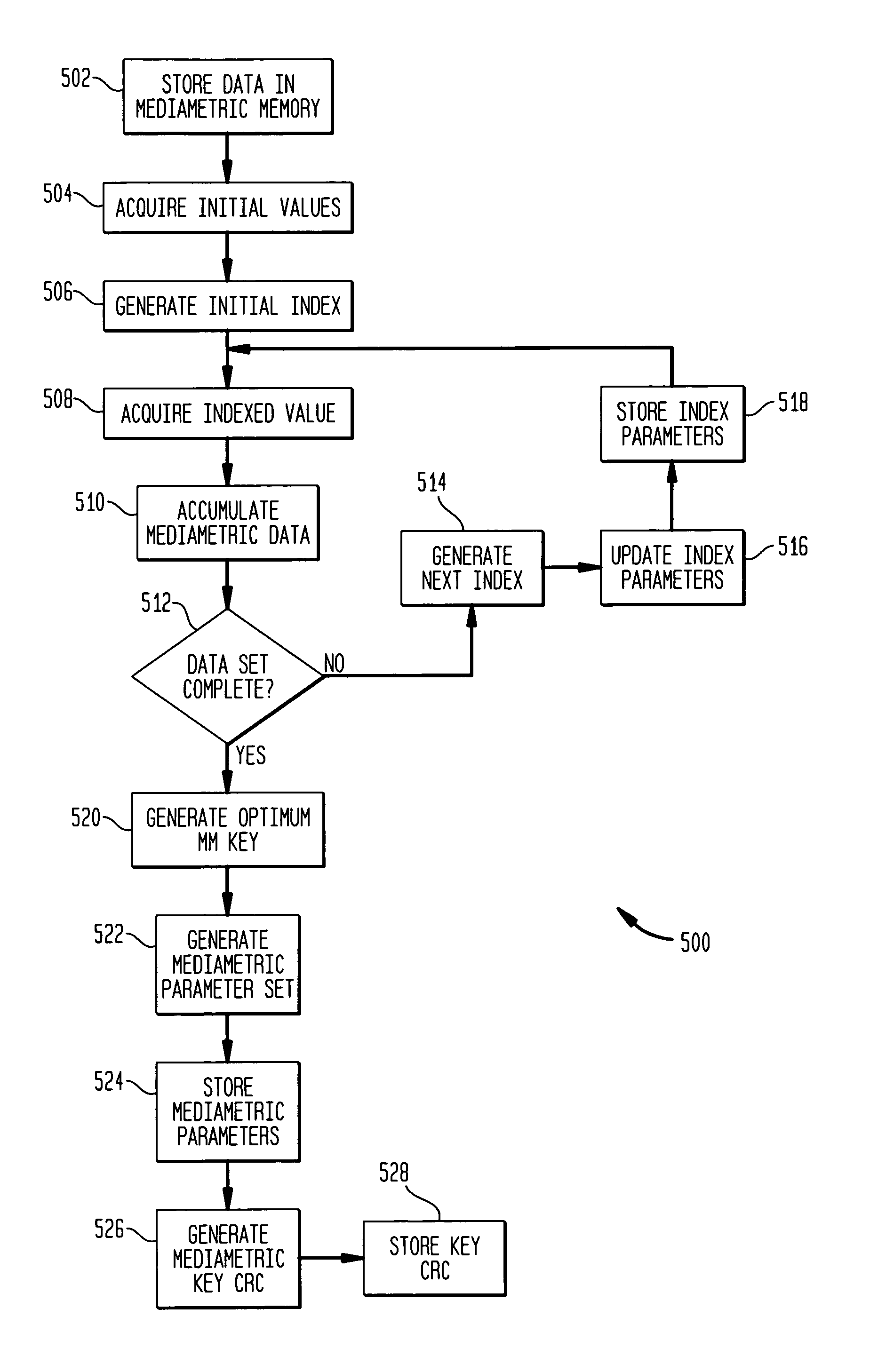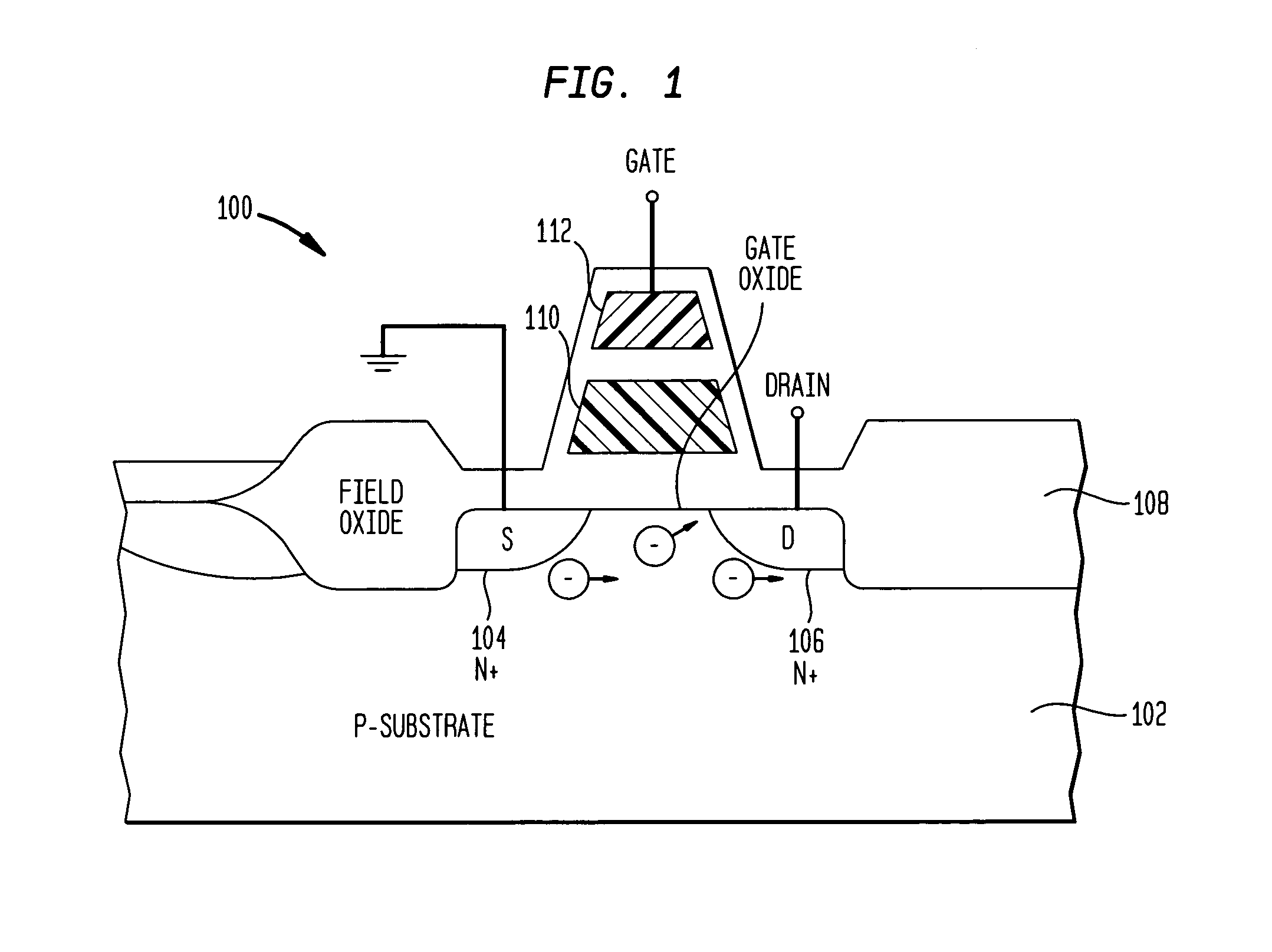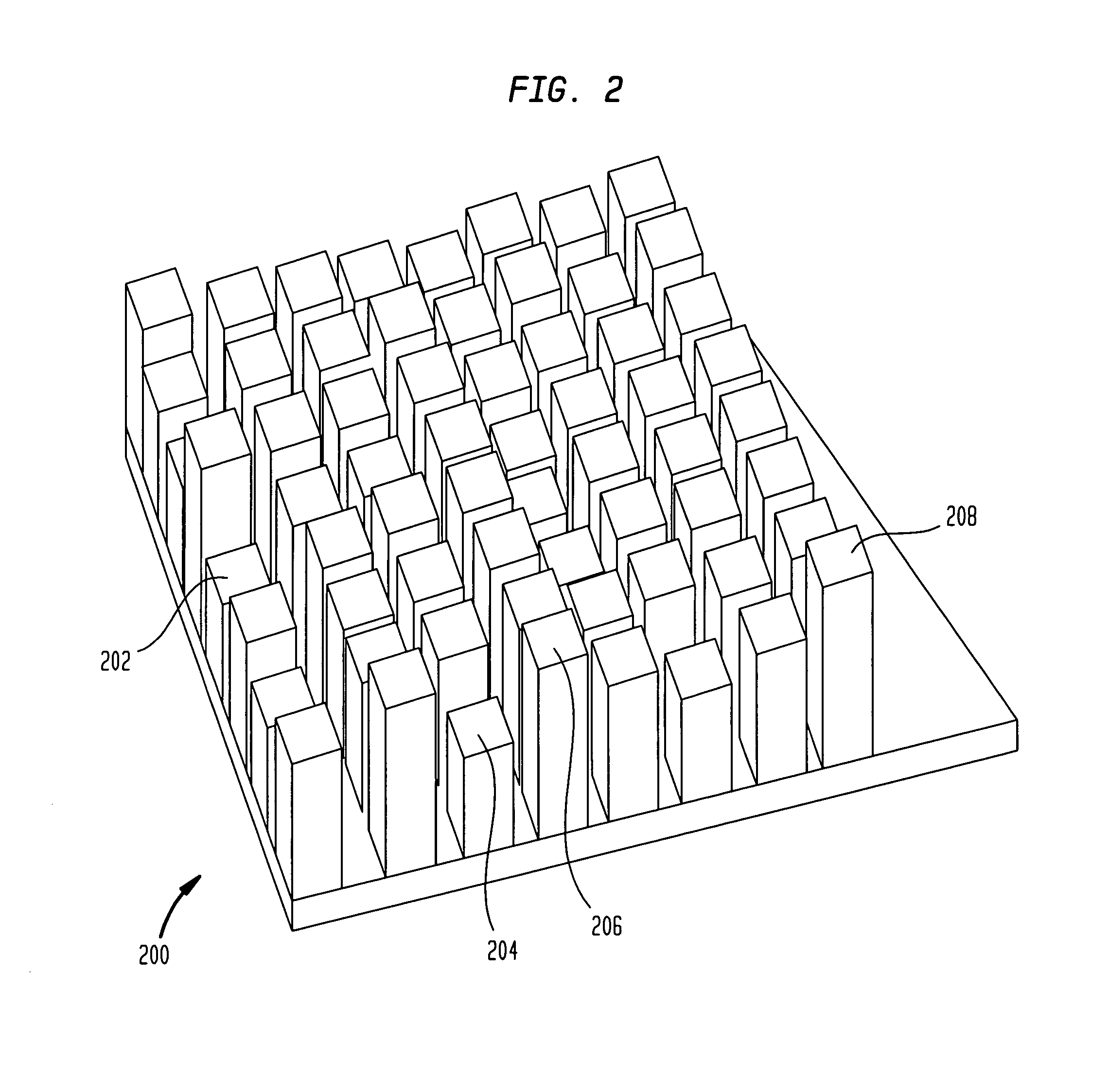Methods and apparatus for mediametric data cryptoprocessing
a cryptoprocessing and data technology, applied in the field of information cryptoprocessing improvement, can solve the problems of not being able to obtain or know outside the internal workings of the semiconductor memory card, disrupting the charge level within the memory cell, and reading the charge level, so as to achieve good security against compromise
- Summary
- Abstract
- Description
- Claims
- Application Information
AI Technical Summary
Benefits of technology
Problems solved by technology
Method used
Image
Examples
Embodiment Construction
[0033]FIG. 1 illustrates a memory cell 100 which may be advantageously employed according to the teachings of the present invention. The memory cell 100 may comprise a transistor integrated on a p-type substrate 102. The transistor comprises a source (S) 104 and a drain (D) 106 which are fabricated using well known techniques by the diffusion of N+ impurities on the substrate 102. The transistor includes a field oxide layer 108 that overlays the source 104 and the drain 106, and a floating gate 110 fabricated from a first layer of polysilicon that overlays the oxide layer 108. The transistor further comprises a gate 112 fabricated from a second layer of polysilicon that overlays the floating gate 110. Data may be programmed in the memory cell 100 for purposes of data storage according to the well known technique of floating-gate charge injection. For example, a potential which is typically greater than 12 volts is applied to the drain 106 to create a strong electric field that energ...
PUM
 Login to View More
Login to View More Abstract
Description
Claims
Application Information
 Login to View More
Login to View More - R&D
- Intellectual Property
- Life Sciences
- Materials
- Tech Scout
- Unparalleled Data Quality
- Higher Quality Content
- 60% Fewer Hallucinations
Browse by: Latest US Patents, China's latest patents, Technical Efficacy Thesaurus, Application Domain, Technology Topic, Popular Technical Reports.
© 2025 PatSnap. All rights reserved.Legal|Privacy policy|Modern Slavery Act Transparency Statement|Sitemap|About US| Contact US: help@patsnap.com



